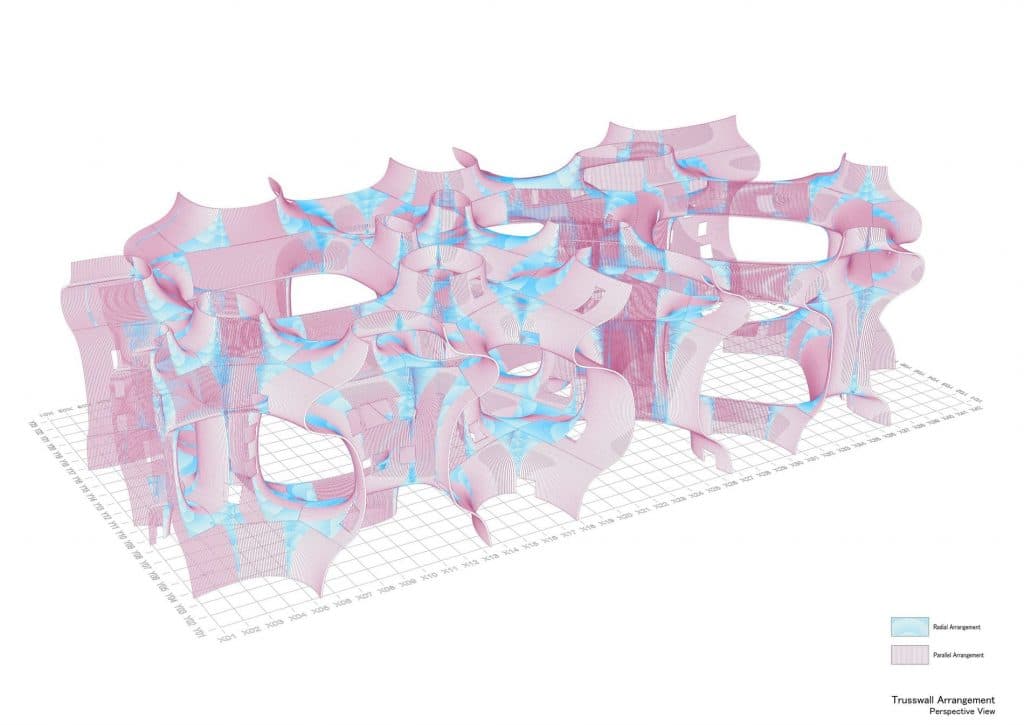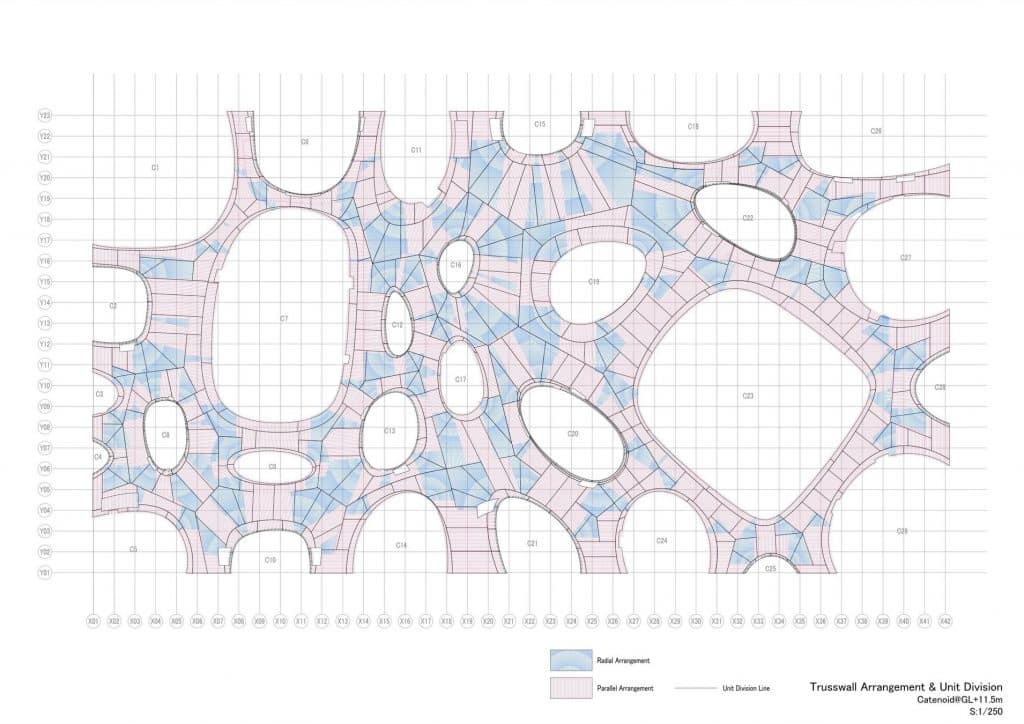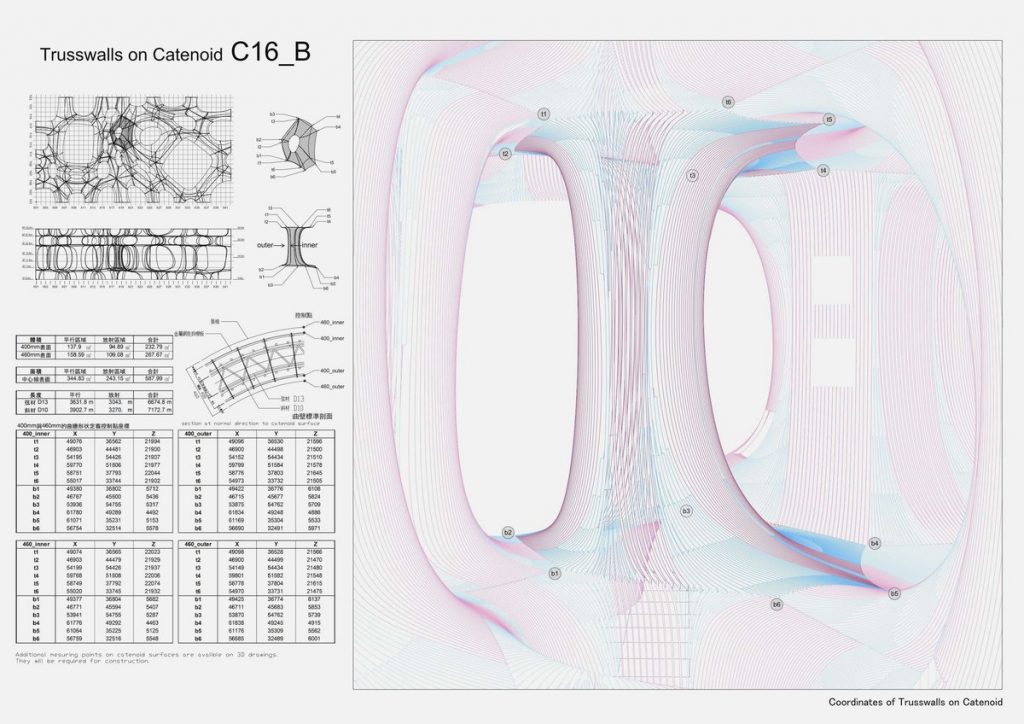Toyo Ito & Associates, Architects
– Toyo Ito

The catenoidal structures of the National Taichung Theatre unfold their space both vertically and laterally, forming the continuous interior space-tubes for the theatrical venue — named ‘Sound Caves’. Our design theme for this building was, from the planning to construction period, to conceive of the structural and mechanical arrangement along the catenoid that simultaneously maintains the spatial continuity.

While we were designing this building, we repeatedly resorted to digital technology to analyse the unique structure. At the same time, we built physical models to validate its construction feasibility, which we could not visualise in the drawings. When the construction began, the discussion with the local contractor offered yet more specific and efficient construction methodologies. Integrating such information, the drawings became media that we updated every day to examine its geometrical conformity to the other systems, such as design, structure, electrical, air conditioning, mechanical, fire protection, and theatre equipment.

All the architectural, structural, and mechanical drawings were thus optimised and were delivered to craftsmen. Ten years after the design phase, seven years after the groundbreaking, the building marked the official completion. We learned through this unique project that our direct discussion on the job site clarified the issues and offered the solutions more often than merely pointing out the problems on the drawings. As the drawings even came to include the instructions for the construction, we ultimately noticed that what was needed to achieve the smartly represented digital model and (quasi-)organised drawings was rather the repetition of steady discussions and patient manual works.
– Translated by Ryosuke Imaeda

